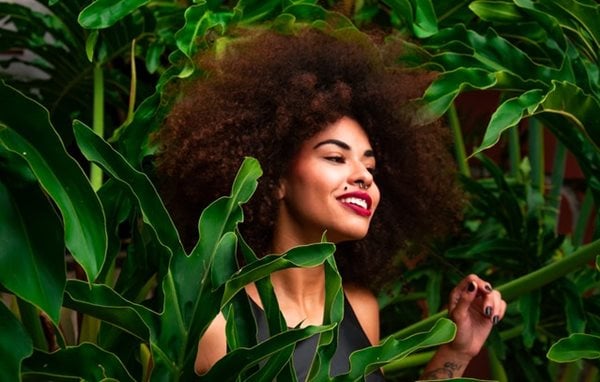
Welcome in the era of the naturalista – the woman who owns her natural beauty and is driving the ever-evolving landscape of natural hair and beauty categories, globally. The movement of the naturals consumer is so powerful to watch, from the change we see on billboards and magazine covers, to the ripple effect of hundreds of new products lining our haircare aisles, each hustling for your attention and your dime.
For brands brave enough to enter the fray, here are a few insider tips on what’s going down in the naturals aisle.
A good place to start is the power of her purse. Euromonitor recorded annual hair care sales in SA at R6.6bn in 2018, expecting it to reach R9.6bn in 2023, driven primarily by the black female shopper whose most dominant purchase trend is going natural.
Right now, the category of black hair care is pretty saturated with product vying for this shopper’s spend, with mass-market brands owning 80% of the spend in SA. According to a Neilsen report, the 2019 black hair care category grew by 6.4%, with the Godrej SA group of brands showing the best performance. Colour, natural styling and aftercare treatments all rose 2% and chemical relaxers declined 3%.
This natural haircare consumer is still – and even more so in the era of a global pandemic – seeking value for money, bang for buck and yes, she wants quality and natural benefits for every cent she spends.
While mass-market hair care brands thrive in Shoprite, Checkers and Pick n Pay, pharma retailers Clicks and Dischem have done the business of driving category growth with improved reach, visibility, distribution and price-driven promotions like the legendary 3-for-2 that shifted the playing field forever.
Price promotions are seasonal, highly anticipated by the shopper and drive traffic down this aisle. While brands see short term gain, it’s proven they do not achieve long term equity with this strategy alone.
Local entrepreneurs bring flavour and sass to the aisle, selling much more than just a product: we have learned that we are selling a story, building identity, trust and connection to a shopper drowning in choice after years of being starved of it.
#BuyLocal has never been more relevant or on-trend as a purchase motivator, with influencers on the ground delving deep into our brand stories, our product making, and the functional benefits of buying from a fellow South African sister who understands your hair and its needs.
Natural haircare is the category where function meets emotion. As a lecturer once told me, “you are not selling hair stylers, you are selling self-love.” To catch her eye at shelf point, and shine bright amongst the category clutter and social media messaging, brands need to build a relationship with her, and give her reasons to believe.
We as local entrepreneurs want this shopper to consider and trial, to trust that the brand we put on shelf for her will walk this journey with her. It’s that relationship and brand experience that brings the shopper back to buy, and gives young local brands a chance to fight for retail space against global giants and longstanding heritage brands, who all own chunks of the category spend.
To further set the scene on this young aisle and its complexities: marketers must get to grips with the reality that this consumer is in flux. Colour, styling and aftercare treatments dominate. Chemical treatments like harsh old-school relaxers are on a steady decline, yet some mild relaxers, relaxer aftercare and blow waves are still making cash, as we see seasonal growth and uptake of these products and styles.
For example, November sees the spike of “holiday hair” preparation, where shoppers use the new-wave relaxers with natural additives like aloe and olive oil, as the precursor to big afros, braids and other final style destinations.
They're softening Afro hair with treatments, blowouts and new-wave milder relaxers; they're boosting and stretching curls, and experimenting with braiding styles. Natural oil sprays and style gels are all trading steadily. These trends reveal a consumer that's strong on the naturals curve and yet not afraid to change up her looks seasonally.
To join the naturals aisle and sell your brand into this category, the shopper needs you to be clear and concise on what value you are delivering. Understand that she moves with the seasons and her usage will change accordingly, that aftercare products will continue to climb and profit for years to come, and while pricing promos will give you the Try Me factor, it will not give you long term equity.
It is the awareness, trust and connection to your brand that will put you on the top shelf.
